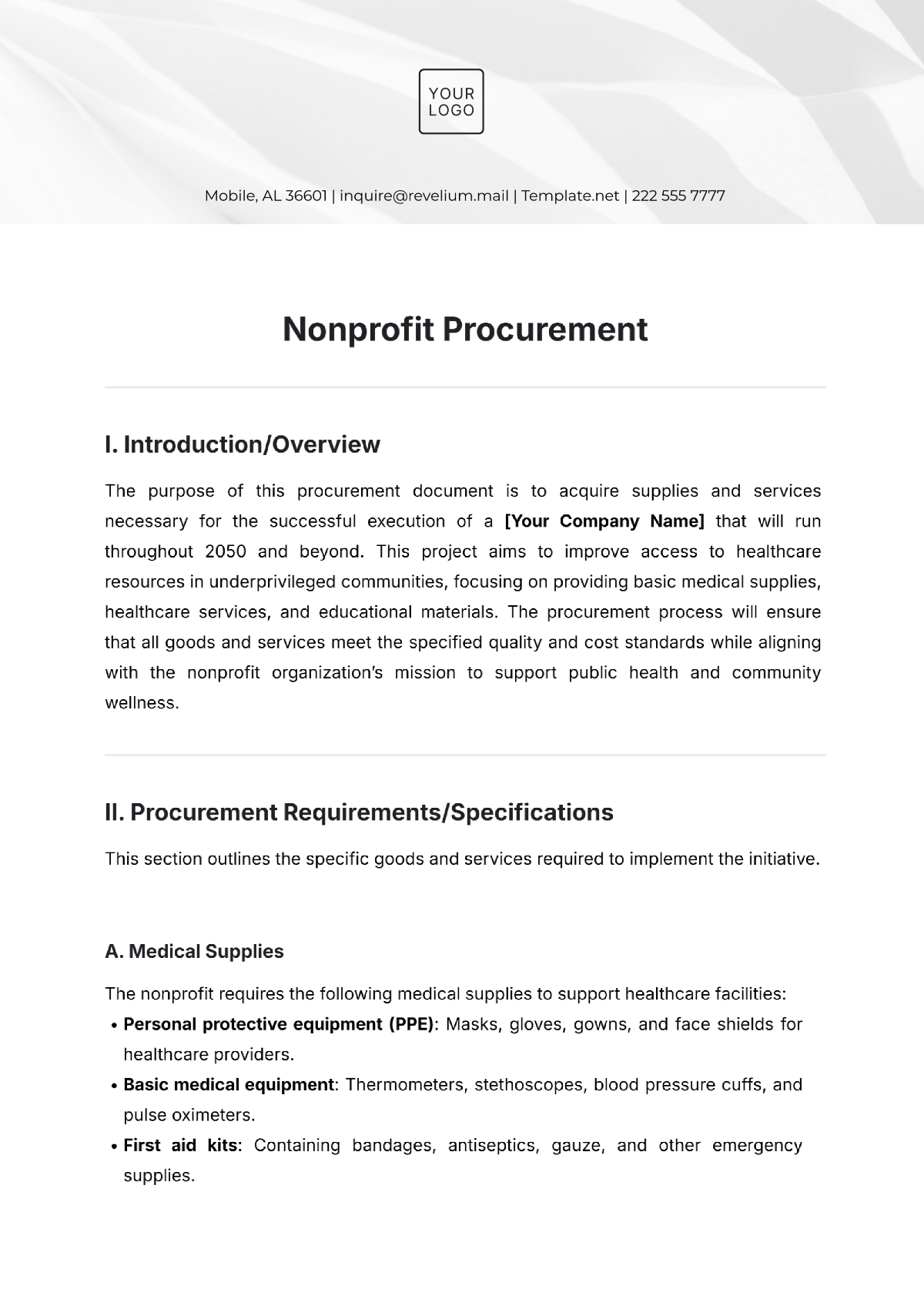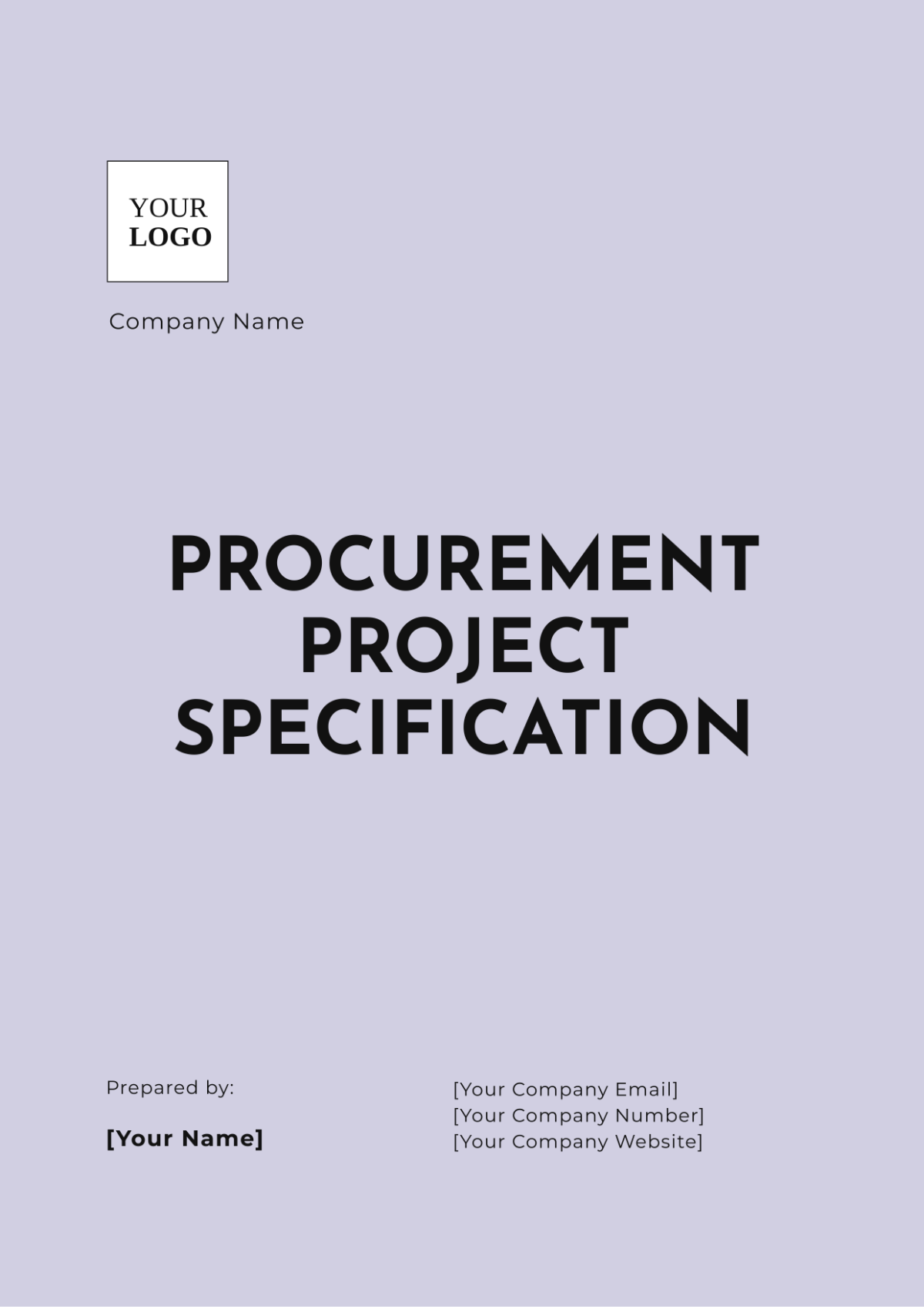Purchase Project Specification
Prepared By: [Your Name]
I. Introduction
The Purchase Project Specification outlines the requirements, objectives, and scope of the Purchase Project aimed at enhancing the procurement operations of [Your Company Name]. This document serves as a detailed guide for the project's execution, comprising critical information on the system's functionality, performance, design constraints, and stakeholder responsibilities.
II. Project Objectives
The primary goal of the Purchase Project is to streamline the procurement process, improve efficiency, and ensure cost-effectiveness. Specific objectives include the following:
Automating purchase requisitions and approvals.
Enhancing supplier management.
Providing real-time tracking of procurement activities.
Integrating with existing financial and inventory systems.
Ensuring compliance with regulatory standards and organizational policies.
III. Scope
The scope of this project encompasses the procurement lifecycle, from requisition to payment. Key components include:
3.1 In-Scope Items
The following elements are within the scope of the Purchase Project:
Purchase Requisition Automation
Supplier Management Solutions
Procurement Tracking and Reporting Tools
Integration with Financial Systems
User Role and Permission Management
3.2 Out-of-Scope Items
The following elements are outside the scope of the Purchase Project:
Logistics and Shipment Tracking
Warehouse Management
Non-procurement Financial Transactions
Inventory Planning and Forecasting
IV. Functional Requirements
The system shall provide the following functional capabilities:
User Management: Functionality to manage user roles, permissions, and authentication mechanisms.
Requisition Management: Capabilities for users to create, submit, and approve purchase requisitions efficiently.
Supplier Management: Tools to manage supplier data, evaluate performance, and maintain supplier communications.
Procurement Tracking: Real-time visibility into the status of procurement activities, including purchase orders, deliveries, and payments.
Reporting and Analytics: Generation of detailed reports and analytics on procurement metrics to support decision-making.
Financial Integration: Integration with existing financial systems to maintain accurate records and streamline payment processes.
V. Non-Functional Requirements
Non-functional requirements include system performance, reliability, and security standards such as:
System uptime of 99.9%
Initial response time of less than 2 seconds for user commands
Data encryption in transit and at rest
Compliance with GDPR and other relevant data protection regulations
Scalability to support up to 10,000 concurrent users
VI. Constraints
The project must consider limitations such as:
Budgetary constraints set at $500,000
Project completion deadline of December 31, 2023
Compatibility with existing ERP and financial systems
Availability of trained personnel
VII. Assumptions
The assumptions made for this project include:
Stakeholder requirements are complete and stable.
The necessary infrastructure and hardware are available and operational.
All third-party systems required for integration will provide timely data exchange.
Key project team members will be available throughout the project lifecycle.
VIII. Stakeholder Identification
Stakeholder | Role | Responsibilities |
|---|---|---|
Project Sponsor | Executive | Providing funding and overall project direction |
Project Manager | Management | Overseeing project execution and ensuring objectives are met |
Procurement Team | Users | Utilizing the system to perform procurement activities |
IT Department | Support | Providing technical support and integration services |
Vendors | Suppliers | Supplying goods/services and interfacing with the procurement system |
IX. Risk Management
Identified risks associated with the Purchase Project include:
9.1 Potential Risks
Lack of user adoption due to inadequate training
Delays in integration with third-party systems
Data breaches or security vulnerabilities
Overruns on the allocated budget
Key team members becoming unavailable
9.2 Mitigation Strategies
Comprehensive training programs for users
Creating an integration timeline with buffer periods
Implementing robust security measures
Close monitoring of the project budget
Developing a contingency plan for resource management
X. Conclusion
The Purchase Project Specification provides a comprehensive guide to ensure the successful implementation of the procurement system. Adhering stakeholders to this specification, closely monitoring progress, and involving all relevant are essential steps towards achieving the project's objectives within the defined constraints.



































